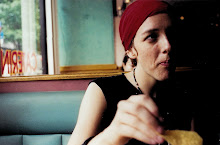It seems appropriate to write about “24 de Mayo,” a central pedestrian boulevard in Quito’s historic center, since today is May 24th, a national holiday celebrating one of the most important battles of Ecuador’s independence. It has always been an important, historical street, decorated with statues honoring the famous battle that occurred just outside of Quito. As the historic center fell into disrepair over the 20th century, “24 de Mayo” became the location of the red-light district from the 1950s until 2001, when Mayor Paco Moncayo shut down all the brothels in order to “gentrify” the area. 24 de Mayo was not only home to the city’s brothels, but was also a bustling thoroughfare with numerous stores, an open air street market where you could literally buy any service or good under the sun (sex, drugs, arms, stolen electronics, used clothes, kitchen supplies, religious icons). It also served as a prime “hang out” place in El Centro, especially for those individuals who exist on the fringes of society. It provided a collective public space where everyone and anyone felt welcome. All types of illicit activities occurred in broad daylight on Boulevard 24 de Mayo because the police couldn’t be bothered to enforce the law there (perhaps they saw it as a lost-cause?) 24 de Mayo was also a residential area with many families and young children. Although it had a dangerous reputation, it had a true neighborhood feeling, where everyone knew one another.
Unfortunately, 24 de Mayo changed dramatically due to the draconian measures implemented by the government for the sake of “gentrification.” First in the mid-1990s, the open air market was shut down. In fact, all the markets of the historic center were pushed into indoor spaces in order to “sanitize” the streets and to create a more tourist-friendly ambiance. In 2001, the city closed down the brothels, which not only employed hundreds of women but also generated significant income for many business owners. In fact, when the brothels and bars closed, many small businesses folded since they depended on 24 de Mayo’s thriving nightlife for their survival. As the prostitutes and their clients moved out, 24 de Mayo became a ghost town at night, in stark contrast to its 30-year history as Quito’s prime destination for night-life. Ironically, although the municipal government removed the brothels in order to cut down on its associated delinquency (this assumed connection between prostitution and delinquency is a topic I will elaborate on in another entry), they actually created more opportunities for illicit drug traffic to flourish. At least when the brothels existed and crowds of people came to the neighborhood on weekend nights, certain informal security measures were in place.
In addition to these changes, urban plans included the redesign of the boulevard itself-- the city made the unfortunate decision to remove all of its shrubbery and trees to cover the area with slabs of concrete. Although the idea was to create a larger space more conducive to social gatherings, they did not include benches for people to sit and congregate (perhaps in reality the city wanted to discourage people from hanging out). This once bustling thoroughfare turned into a freakishly empty concrete slab. No one hangs out on 24 de Mayo anymore. Despite the attempts to make it “tourist-friendly” I have yet to meet a tourist who actually wants to visit 24 de Mayo. There are statues of independence and a gorgeous view of Quito’s southern outskirts, but little more to attract tourists. Perhaps it is “cleaner” and more gentrified because the “sketchy” people and the brothels have vanished, but the city made a mistake in its new design. It hadn’t anticipated the failure of business or the disappearance of all social life--to avoid these pitfalls, it should have included the residents’ and business owners’ needs in its plans.
I’m not the only one to view the redesign and gentrification of 24 de Mayo as a complete failure. In today’s paper, El Comercial (5/23/2010), there was an interesting article about the abandonment of 24 de Mayo by business owners and residents alike. The article also discussed the “new” 24 de Mayo as a place that has lost its soul. It once had a thriving radio station based on the lively anecdotes and daily narratives of the boulevard, but that has long since shut down. Even though the city’s goal was to attract tourists and Ecuadorians of a higher social class to the area, either as new residents or simply as visitors, the few people one sees on 24 de Mayo are still individuals on society’s margins: addicts, lone prostitutes, beggars, and drunks. They stand out even more now because so few people hang out in the area. The arrival of a police station on the boulevard pushed the still thriving drug trade further underground. Obviously the city had not anticipated transformation of 24 de Mayo into a ghost town--I can’t imagine that they are pleased with the results. Instead of improving conditions, the municipal government eliminated an egalitarian public space used by the city’s poor and marginalized citizens. As also seen by the ongoing battle to get rid of El Centro’s street prostitution, public spaces are becoming increasingly exclusive places, reserved for “decent” people (not for prostitutes or any other “fallen” characters).
Monday, May 24, 2010
Subscribe to:
Post Comments (Atom)

No comments:
Post a Comment